2024.09.05
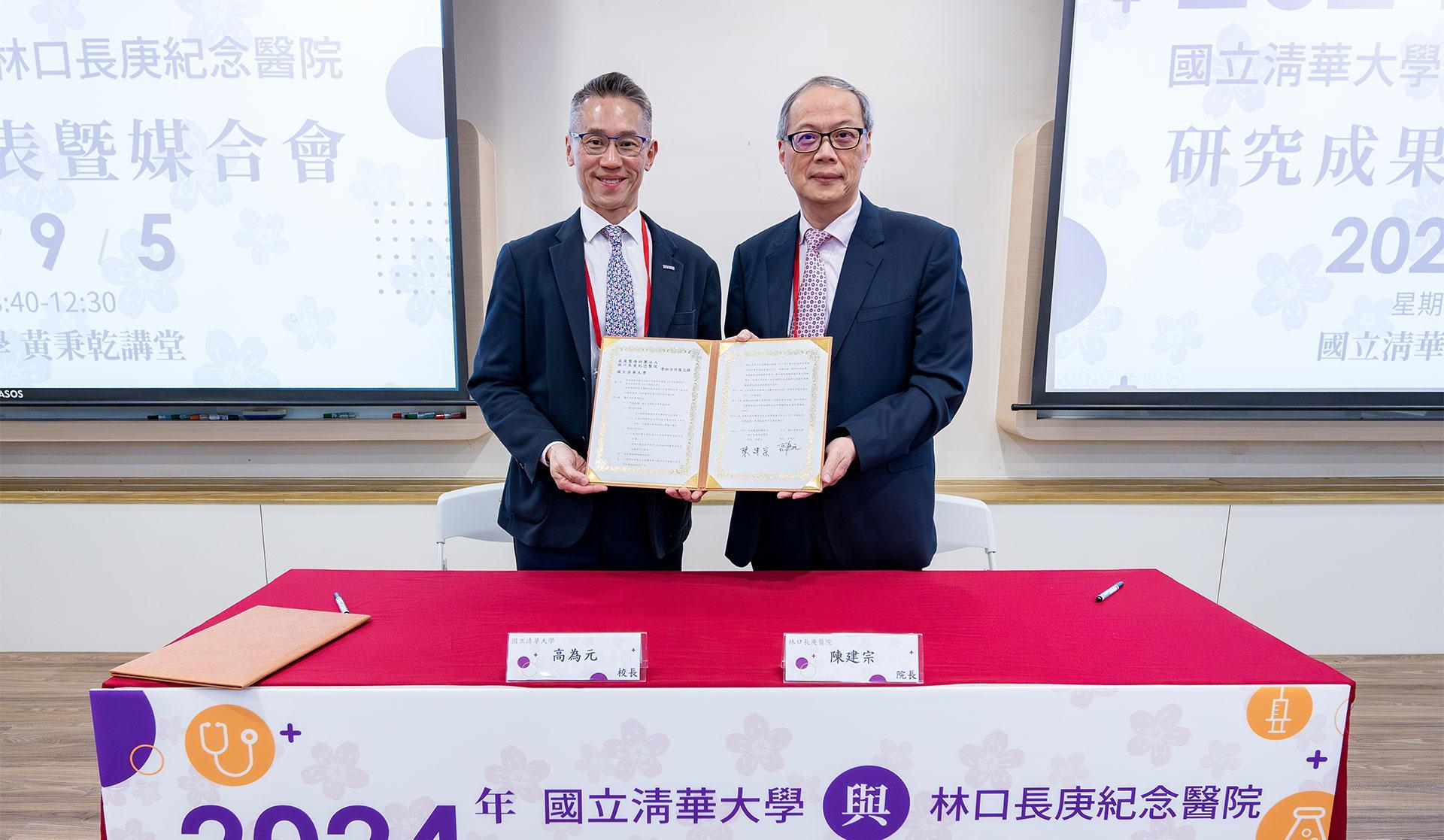
NTHU president W. John Kao (left) and Chang Gung Hospital superintendent Chien-Tzung Chen displaying the signed cooperation memorandum.
Over the past 18 years, National Tsing Hua University (NTHU) in Taiwan has been conducting medical research in cooperation with Chang Gung Memorial Hospital in Linkou. A joint research team has recently announced the development of a 3D-printed helmet for correcting neonatal head tilt. During the press conference, which was held on campus at the Pien-Chien Huang Hall, NTHU president W. John Kao signed a cooperation memorandum with Chang Gung Hospital superintendent Chien-Tzung Chen.
Kao said that translational medicine, which converts basic medical research into clinical treatment, is very important and requires close cooperation between professors and clinicians. As a result of their many years of cooperation, professors and researchers at the two institutions have developed a thorough understanding of clinical treatment. Kao said that he is looking forward to deepening the cooperation between the two institutions so as to bring better treatment options to patients.
Chang Gung R&D director Wen-Neng Weng said that announcing the research results today in the Pien-Chien Huang Hall is particularly meaningful because the cooperation between the two institutions was initiated by Huang. Weng said that he is looking forward to increasing cooperation with NTHU and that he expects the results to be impressive.
Chen said that Chang Gung Memorial Hospital attaches great importance to its cooperation with NTHU and that over the years approximately NT$290 million has already been invested in the project, adding that NTHU's expertise in biomedicine, molecular medicine, innovative materials, and chip research has been a major factor in the success of the project thus far.
With Professor Chang-Chun Lee of the Department of Power Mechanical Engineering leading the engineering team and Dr. Pang-Yun Chou of the Craniofacial Center at Chang Gung leading the medical team, the project has developed a 3D-printed helmet for correcting neonatal head tilt.
Research has found that between 10% and 20% of babies are born with neck muscles that aren't strong enough to support the weight of their heads. This can result in uneven pressure during sleep, resulting in asymmetry of the head that not only affects appearance, but may also hinder limb coordination. In Europe and the United States this condition is often treated with a corrective helmet, but if the fit is imprecise then the results are limited.
Chou said that the Hospital measured the heads of 60 babies aged between 1 and 12 months to come up with a basic helmet design that can be customized using 3D scanning and printing. The baby starts wearing it when he or she is 4 months old, and after about six weeks the head shape becomes round and symmetrical.
To make the helmet more comfortable to wear, Lee used woven 3D printing technology to make it more breathable. The team is currently working on adding a built-in pressure sensor to more accurately monitor the progress of the correction. This innovative technology has already received two patents.
Additional research announced during the press conference included an oral drug delivery system developed by Hsing-Wen Sung of the Department of Chemical Engineering and Dr. Kun-Ru Lin of the Department of Nuclear Medicine at Chang Gung; a brain chip developed by Professor I-Chi Lee of the Department of Biomedical Engineering and Environmental Sciences and Dr. Ko-Ting Chen of the Neurosurgery Department at Chang Gung; a smart organic nanosponge developed by Professor Shang-Hsiu Hu of the Department of Biomedical Engineering and Environmental Sciences and Dr. Yu-Jen Lu of the Neurosurgery Department at Chang Gung; and a 3D cell spheroid for improving the efficiency of cell transplants developed by Associate Professor Chieh-Cheng Huang of the Institute of Biomedical Engineering and Dr. Si-Heng Chen of the Plastic Surgery Department at Chang Gung.
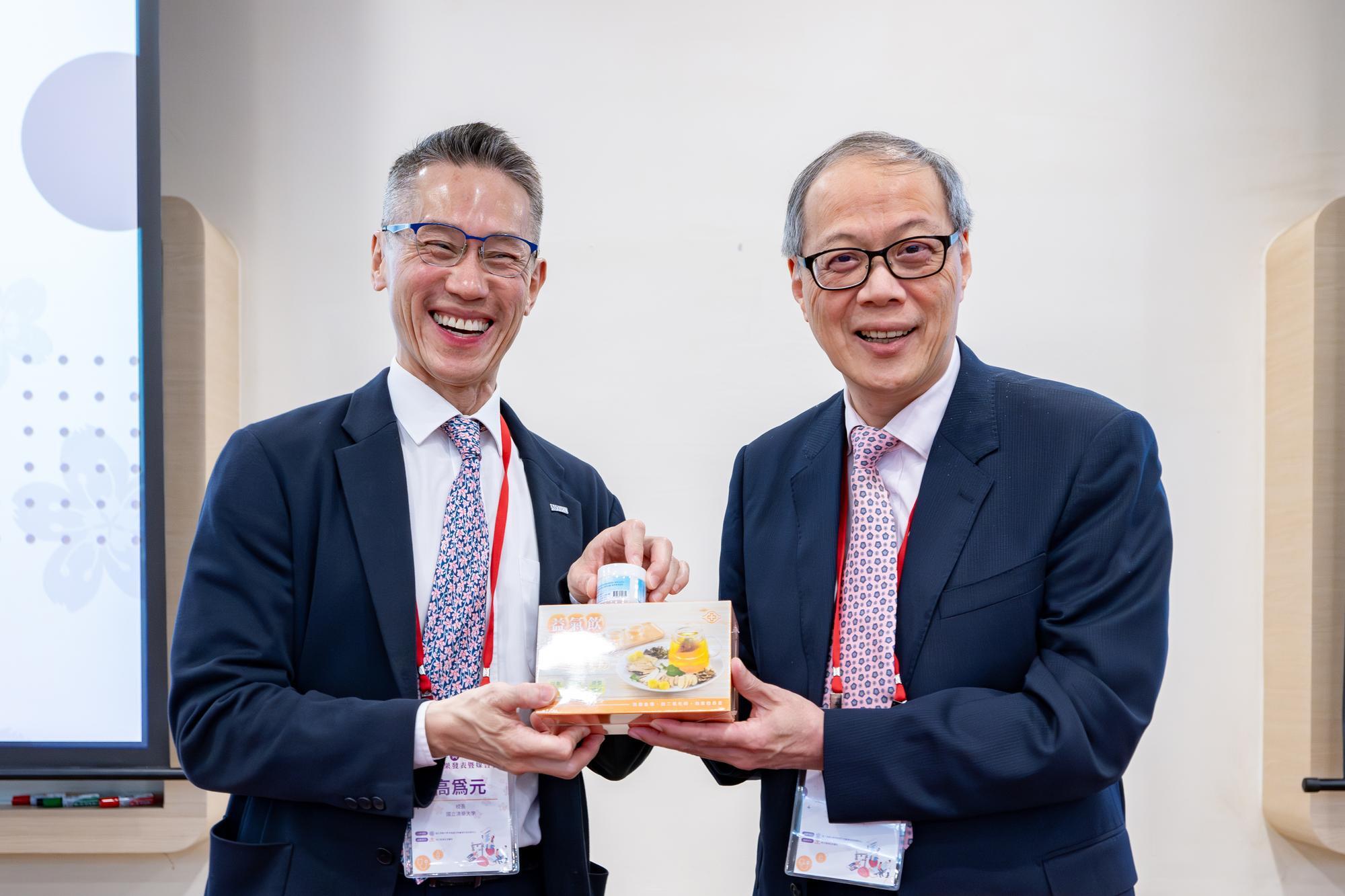
Chen (right) presenting NTHU president W. John Kao with a health drink developed at Chang Gung.

At the press conference announcing the results of recent joint research projects between NTHU and Chang Gung were some 30 doctors from Chang Gung.
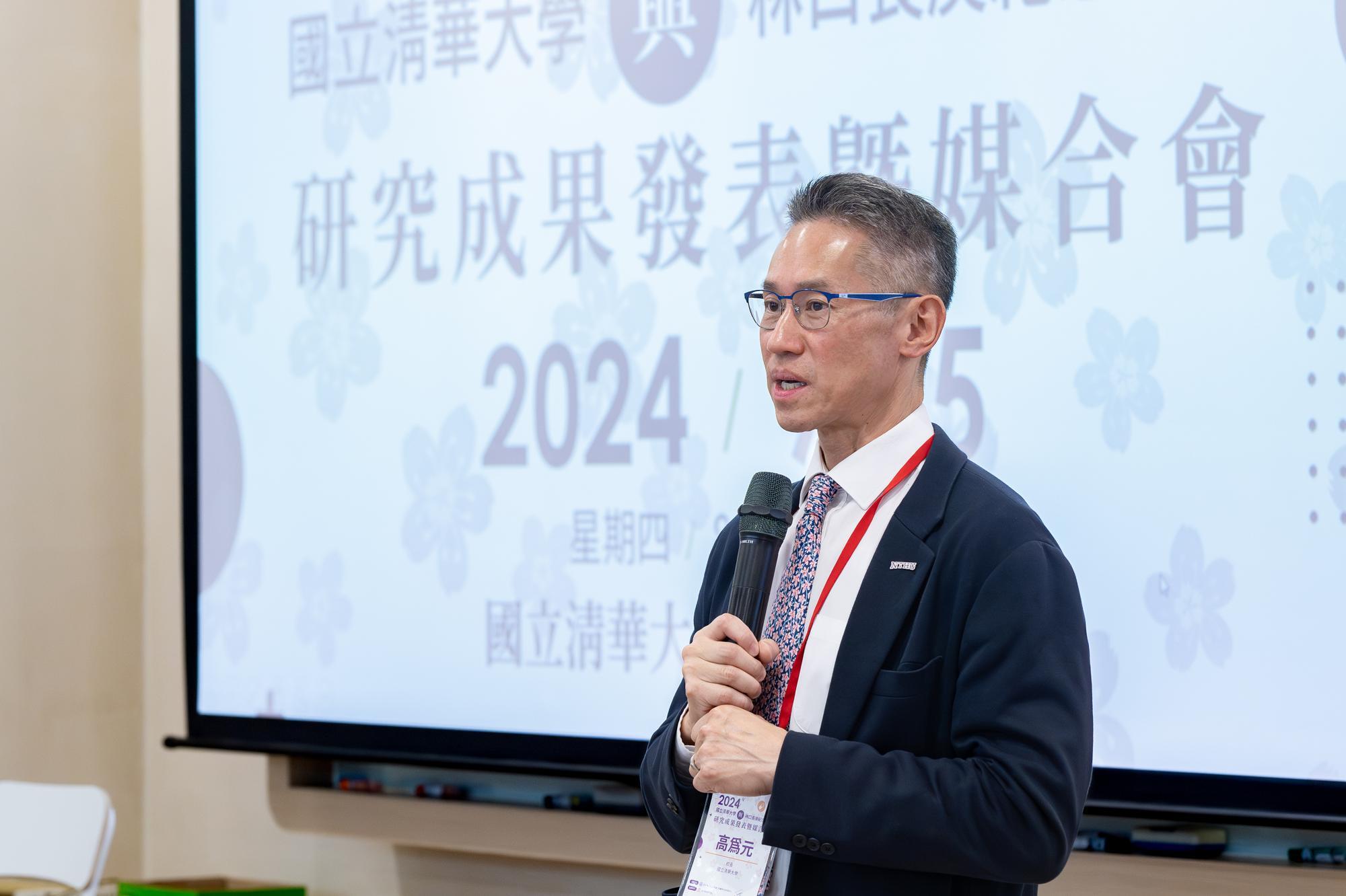
NTHU president W. John Kao emphasized the importance of translational medicine combining the expertise of professors and clinicians.
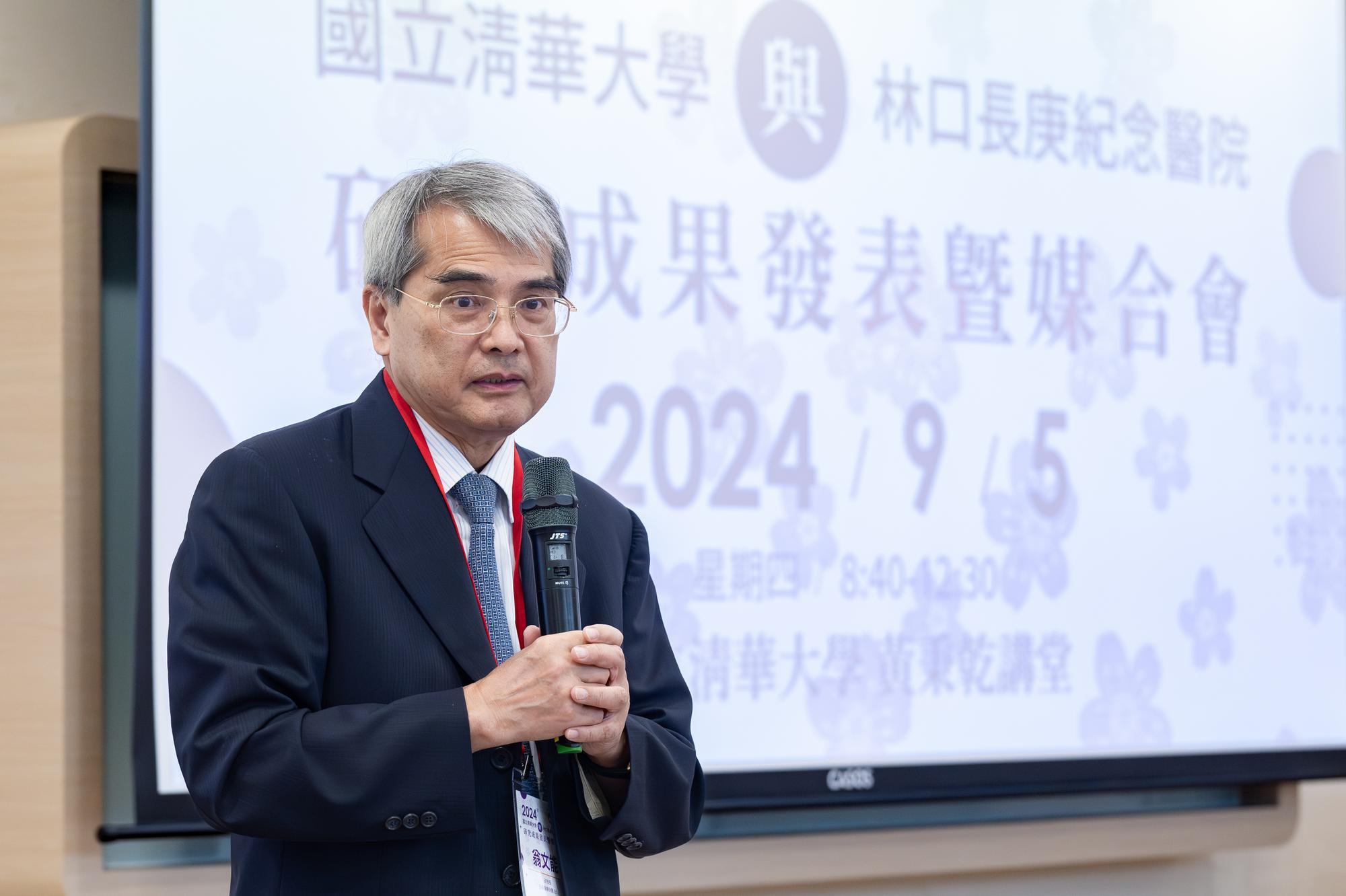
Chang Gung R&D director Wen-Neng Weng is looking forward to increasing cooperation with NTHU.
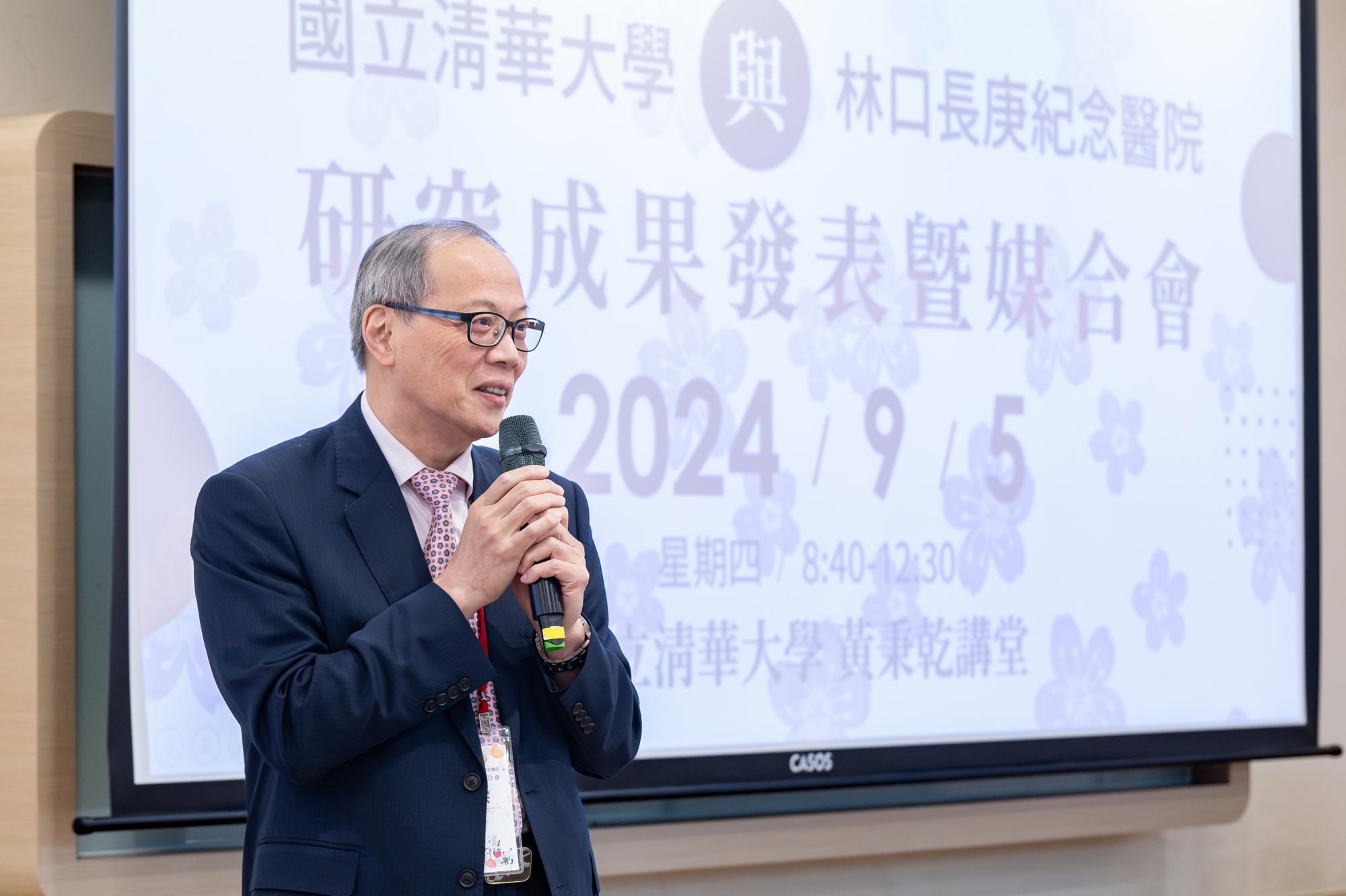
Chen said that NTHU's expertise in biomedicine, innovative materials, and chip research has been a major factor in the success of the project thus far.
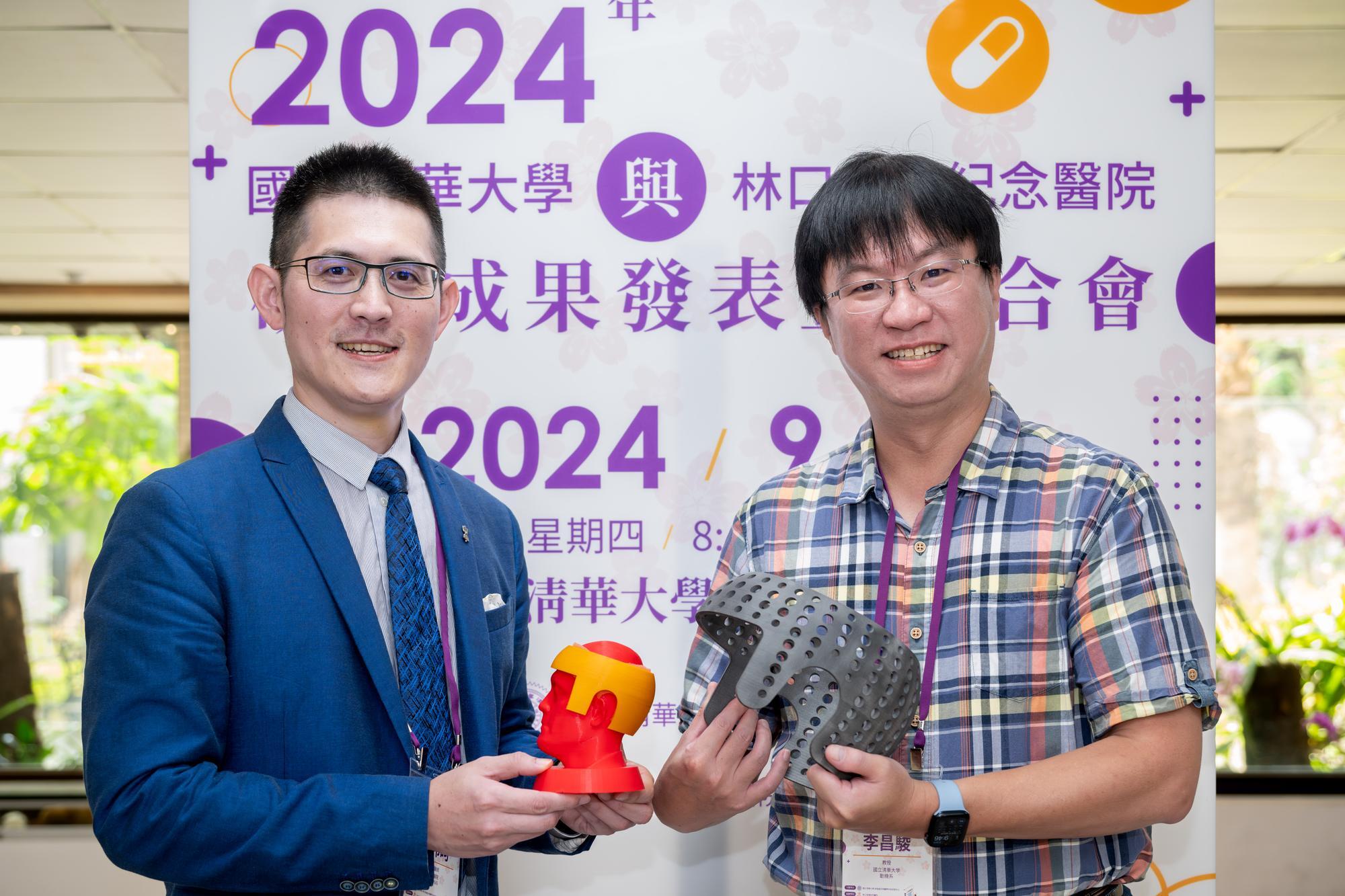
Professor Chang-Chun Lee of NTHU's Department of Power Mechanical Engineering and Dr. Pang-Yun Chou of the Craniofacial Center at Chang Gung have developed a 3D-printed helmet for correcting neonatal head tilt.
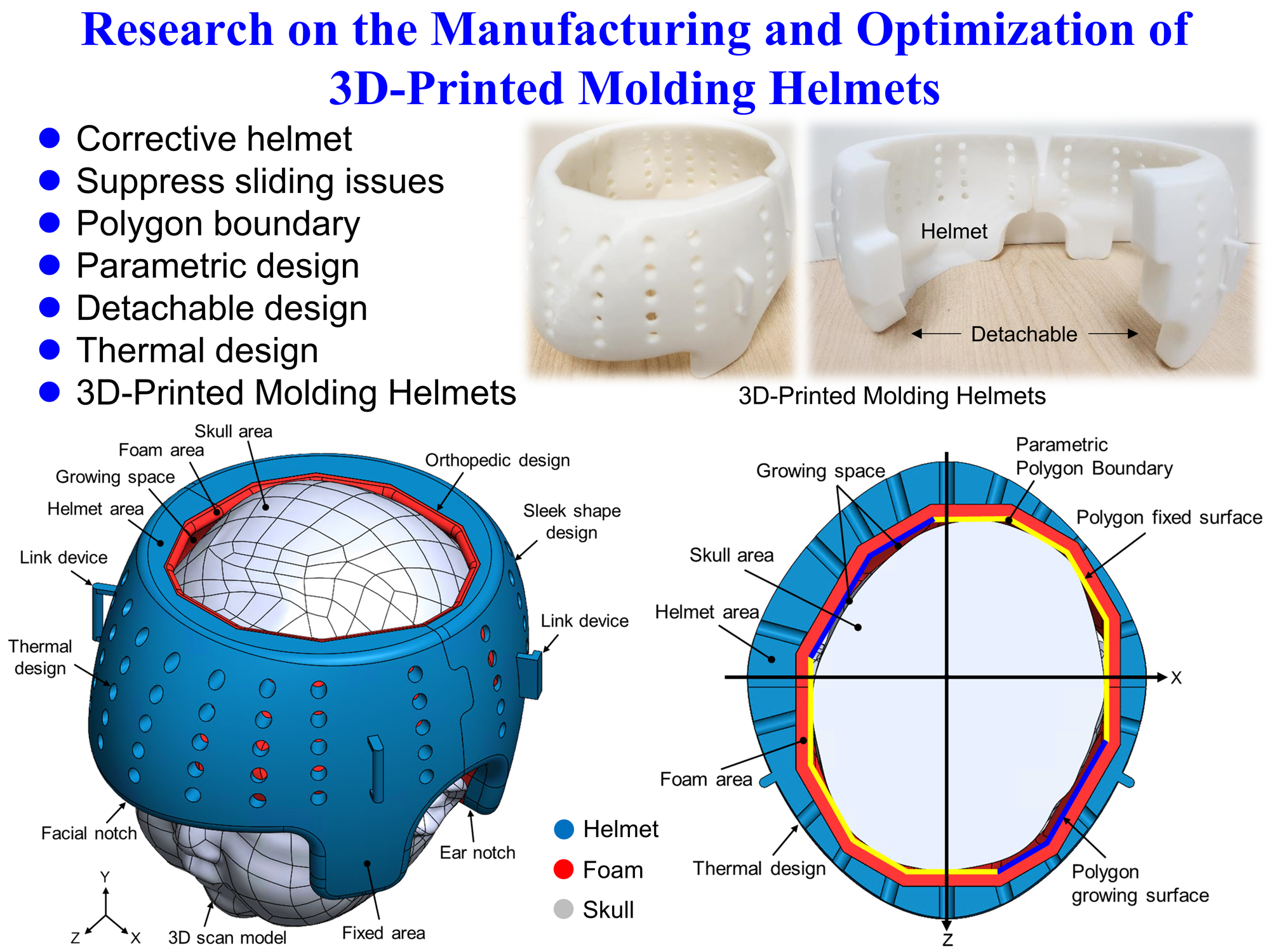
Diagram of the 3D-printed helmet for correcting neonatal head tilt developed by the NTHU-Chang Gung research team.
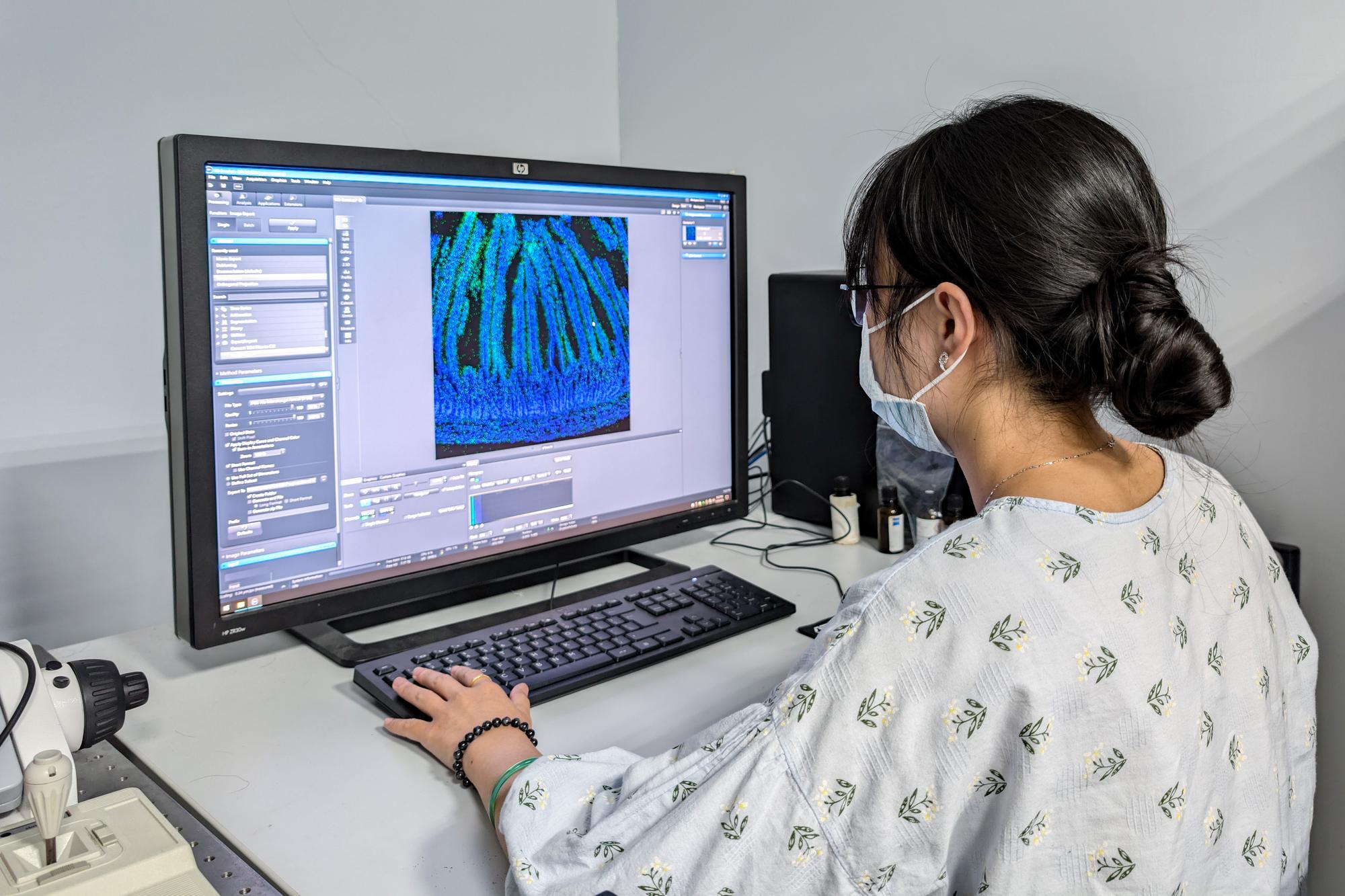
Hsing-Wen Sung of NTHU's Department of Chemical Engineering and Dr. Kun-Ru Lin of the Department of Nuclear Medicine at Chang Gung used a microscope to analyze the absorption pathways of drugs through the intestines.

Shang-Hsiu Hu of NTHU and Yu-Jen Lu of Chang Gung have developed a smart organic nanosponge so that immunotherapy can be more accurately targeted at tumors.
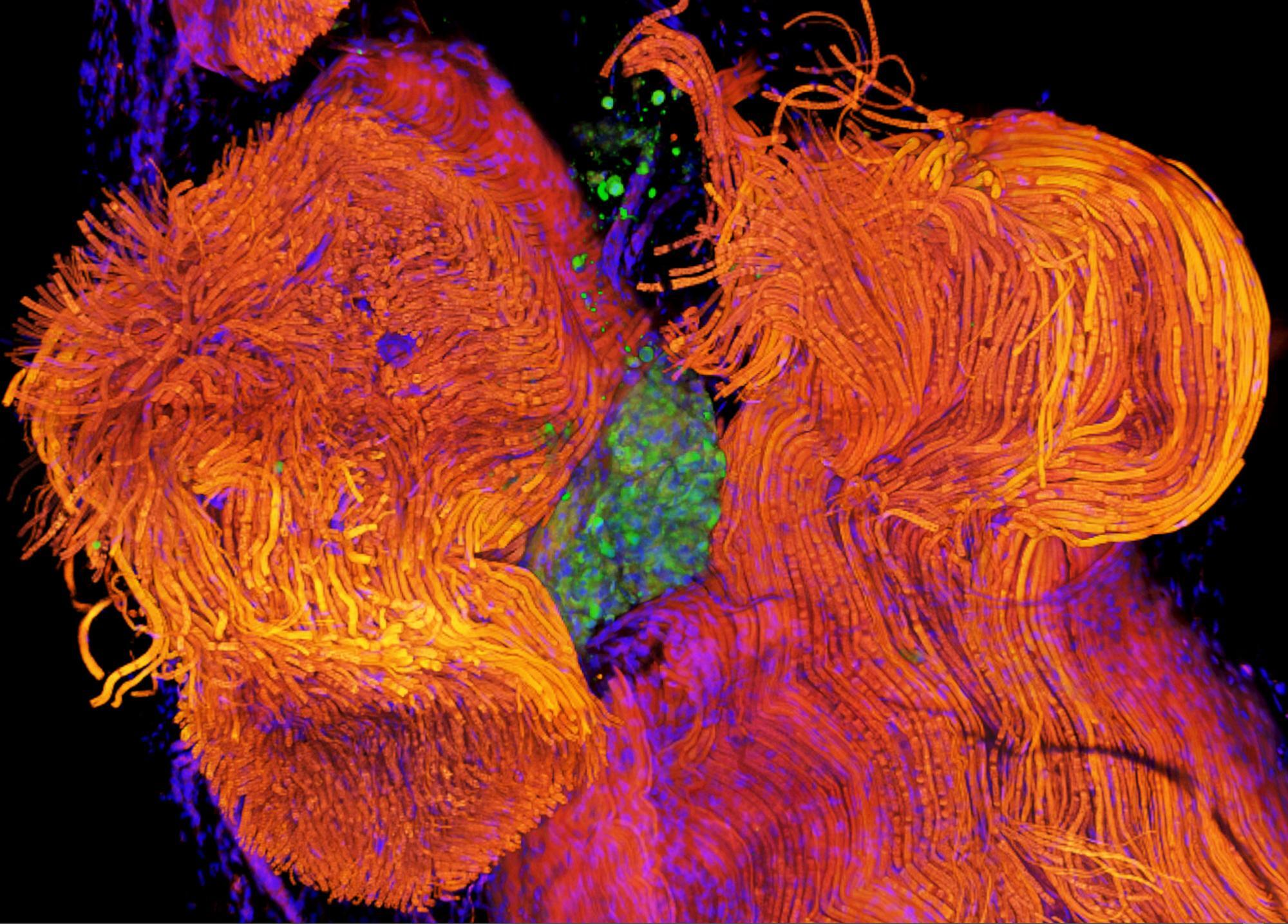
Cutting edge NTHU-Chang Gung research: micrograph showing transplant of 3D cell spheroids (green) into the sciatic nerve (orange) of rats.
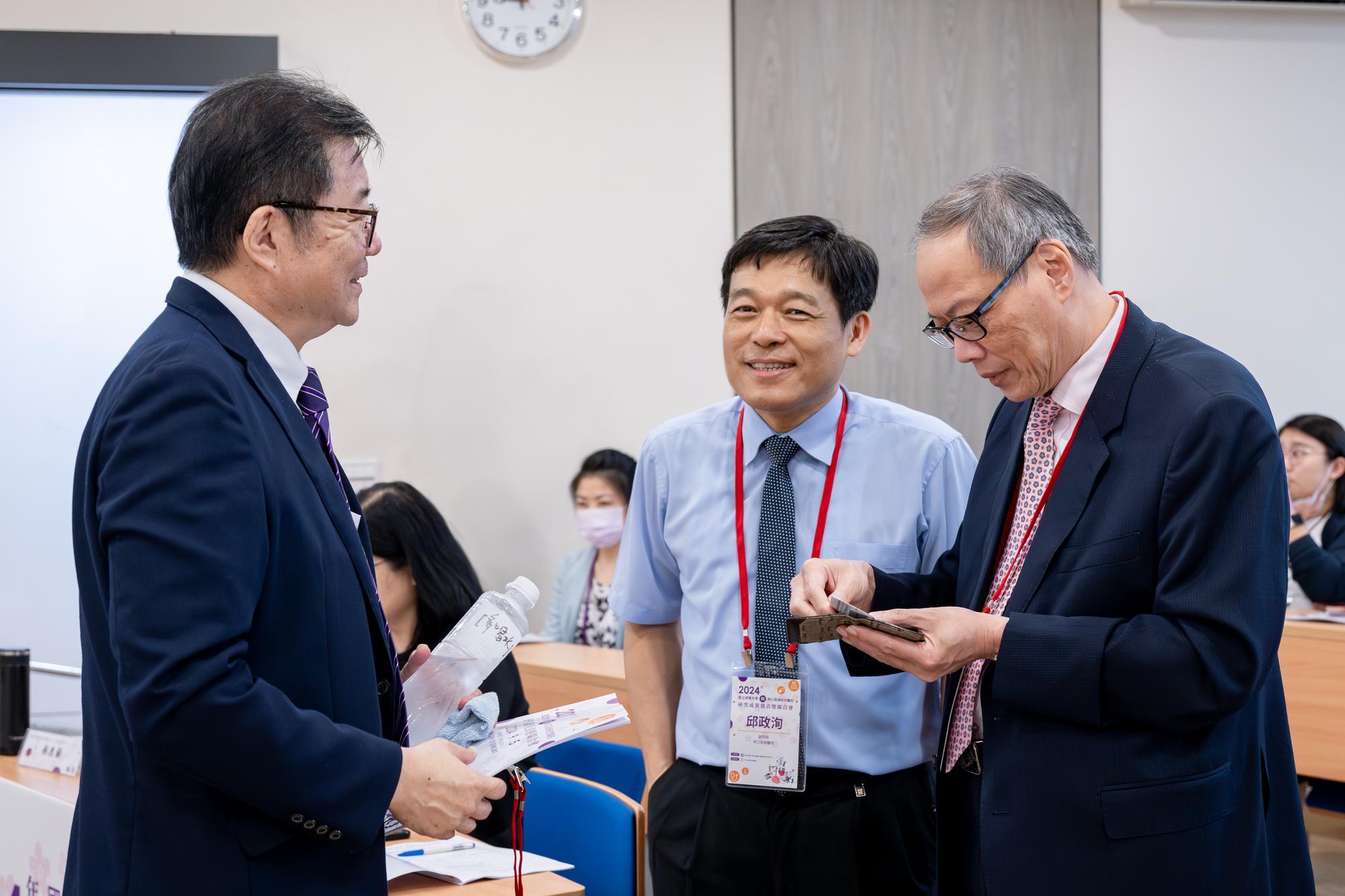
NTHU-Chang Gung research breakthroughs often begin with a brainstorming session.

Biomedical Science and Engineering Center director Frank Lin is looking forward to increasing cooperation with NTHU.













